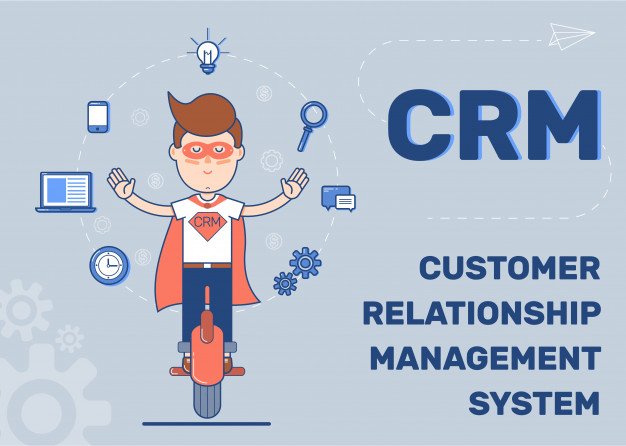You’ve got great resources within your business: a rock star sales force, savvy human resource managers, capable customer service managers, and more. But do you have a proven system for reducing the friction, inside and outside of your business, to enable all of these key players to do their best work? The use of the CRM apps can make things easier for you.
A good customer relationship management (CRM) system is the glue that holds a high-functioning business together. Once the purview of heavy desktop-only applications, modern CRM is delivering wins by the minute now in the palm of your hand, opening worlds of insightful data and always-on connections to your customers in meaningful ways through capable and intuitive mobile apps.
The Business Advantages of Mobile CRM Apps:
Your customers love it:
Your customers, much like your workforce, are always connected through their mobile devices. Equipping your employees with CRM mobile apps facilitates customer engagement through popular social media platforms, adding accessibility and visibility to everyday nature of social media means you can keep a constant finger on the pulse of customer interactions and stay ready to respond to your customers when they engage you, building rapport, credibility, and relevance.
Office on-the-go:
When your salespeople go out into the field with a CRM mobile app, they have an enormous wealth of information right in their hands. Instant access to a single authoritative source of internal and customer data means salespeople can update relationship data any time, even in the middle of a conversation. There’s no more going back through hurried notes; easy-to-use apps make it simple to capture all the details, no matter how small they seem, because of every detail matters in cultivating long-lasting relationships.
Instant access means immediate feedback, too, whether it’s insights from internal partners or direct customer engagements on social media. With a single tap, you’re up-to-date on everything from responses to your latest product launch to marketing’s newest promotion without having to trudge through an already-bursting inbox.
Keep up the pace:
Customers don’t just like instant answers – thanks to the fast-moving nature of news, media, and the internet – they expect them. And to be successful, your business must not only meet these expectations but exceed them on a daily basis. Buckets of emails, time-consuming phone calls, and extraneous sales meetings are all barriers to closing more deals.
Meanwhile using mobile CRM apps can provide everything your business needs to adapt to these changes in an on-demand way, so there’s no delay. You already know what a talented group of people you have supporting your business; CRM tools like customer insights, aggregated relationship data, and instant feedback help your associates take their game, and your business, to the next level.
Connected workforce:
Do you have a distributed workforce? Agents who regularly travel or necessarily put in lots of time outside the office or away from their desks? Having your employees use mobile CRM apps enables them to serve customers from anywhere.
It allows them to be more responsive to customers, makes it easier for them to adapt their own schedules, and helps them fulfill the needs of the customer relationship in the most efficient way possible.
This is particularly important for salespeople. It may not sound like it at first, but the difference between consuming and cultivating relationship data on a phone or on a sometimes-cumbersome laptop can make a world of difference.
Remember the last time you had a major insight or got a stellar lead on your way to catch the next leg of your flight? Those moments of inspiration are much more easily captured when you don’t have to stop, pull out a laptop, fumble for a mouse and charger, login, and only then get to work.
CRM Apps and marketing automation:
Are you still relying on promotional emails, mailers, or other means of customer engagement that give you no insight on engagement? Adding a powerful CRM mobile app to your toolbox that’s coupled to a consumer app for use by your customers means you can now send promotions, updates, and other marketing engagements right to their CRM apps.
Imagine sending your biggest customer a personal promotion in a push notification right on their device! Not only are you removing roadblocks to getting your pitch in front of their eyes, but you also get baked-in insights on who has engaged, who show interest, and who may be planning to make a move all without them having to say a single word to you.
Understand that yesterday’s options won’t cut it in today’s world. You’ve got to be on the leading edge to stand out these days, and the vast benefits of putting your relationship tools right in the hands of those who matter most could very well put you in the lead.
Know your options, because knowledge is power and that knowledge could just be the one thing you’re missing right now.
Read Also:





















